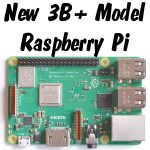
It’s Pi day (if you do dates in the illogical MM/DD/YY format) so Raspberry Pi is releasing a new version of the Pi 3B. It’s called the 3B+, which is logical because it has more to offer than the 3B and is also in keeping with previous Pi naming conventions. It contains several incremental improvements, but taken together they provide a substantial upgrade in performance with a faster processor, addition of 5GHz wifi and 330Mbit ethernet and PoE. More detail further down. Here’s the new board…
New Chip BCM2837B0 1.4GHz
Probably the most significant change is that there’s a new, enhanced version of the silicon. The new chip is the BCM2837B0, which has been tweaked to improve the power supply to the ARM cores. This means they can be clocked at 1.4 GHz (previously 1.2GHz) – a 16.7% increase.
While messing with the silicon, it was decided to add a metallic heat spreader and enhance the PCB to assist heat dissipation. This should help maintain higher clock speeds before throttling kicks in.
802.11ac Wireless Support
The wireless ‘department’ has received a substantial makeover…
- It uses the Cypress 43455 “Single-Chip 5G WiFi IEEE 802.11ac MAC/Baseband/ Radio with Integrated Bluetooth 4.2 and FM Receiver” (FM Receiver not connected)
- The ceramic antenna has been substituted for a Proant resonant cavity antenna (as used on the Pi Zero W)
- The wireless/Bluetooth components have been enclosed in a metallised can
- 802.11ac is now supported, which means the Pi can do WiFi at 5 GHz as well as 2.4 GHz
You may remember when the Pi Zero W came out last year that the unlikely looking ‘vacuum cleaner nozzle’ shaped keepout in the PCB was the new antenna. This design performs better than the ceramic antenna from the Pi3B, so it’s been incorporated into the 3B+. You can see in the first close-up shot (click to enlarge) that there are 4 tiny capacitors incorporated into this antenna design. The two capacitors in the middle of the triangular cutout were not in the same position on the Pi Zero W, so the design has been tweaked for the 3B+.
The wireless and Bluetooth components are now inside a metallised can. This component group has been FCC-approved as a module, which means if you incorporate a Pi3B+ into a product, wireless/BT transmission doesn’t require any further certification. The can also has the Raspberry Pi logo embossed on it, which is a rather nice touch…
The Pi3B+ 802.11ac at 5 GHz has up to 100 Mbit performance. If you operate in a busy wifi environment, switching to 5 GHz can give some significant improvements. It’s always good to have choices.
Base-1000 Ethernet
The Pi 3B+ uses a Microchip LAN7515 chip for ethernet and USB 2.0 hub. So it can take advantage of a Gigbit ethernet connection, but because of USB 2.0 limitations, its maximum throughput is 330 Mbit.
This is still a big performance hike and will be plenty for most applications. My broadband is 100 Mbit, so the Pi3B+ is now able to fully utilise that speed. With the older Pi3B I could get a maximum speed of around 60 Mbit.
My router only has one Gigabit port, so I was unable to do a fair test of the ‘internal network’ speed, which I would expect to be at or close to the quoted 330 MBit.
The Gigabit ethernet chip uses more power than a 100-Base-T, but there will be a facility to switch this off to save power if not needed.
Overall the Pi3B+ uses about 170-200 mA more than the Pi3B. I’ll do a more in-depth post with power measurements in a few days.
PoE Connector Added
While we’re on the subject of ethernet, there’s a new header connector (labelled PoE) which attaches to another new official Raspberry Pi product – a power over ethernet board. This board will be available in a few weeks. If you have a compatible system, or a power injector, you’ll be able to power your Pi over the ethernet connection. This is really useful for remote applications where you only want to run a single cable – e.g. security camera.
Power Circuit Tidy Up
The power circuit has been improved. In fact a new power management unit (PMU) has been developed which maximises performance and costs less to produce, enabling other design enhancements to the Pi3B+ while keeping the same price point.
Component Count Reduction
The Raspberry Pi 3B+ has ~30 fewer components than the 3B, which means less components to pick and place in manufacture, therefore lower manufacturing cost. This also helps keep the product at the same price while making it ever better.
Processor Speed Test
Using the same multi-threading Python scripts I’ve used since Pi2 came out (find them here on GitHub) I compared the 3B+ with a Pi3B. In case you don’t remember or never saw it, these scripts take the Scrabble word list and sort it into letter order. It’s a huge list of something like 160,000 words, so it’s quite a nice processing task to throw at a CPU. You can tell the Pi to do it multiple times simultaneously, which makes it use multiple cores.
Results
Pi3B+ 4.95, 4.95, 5.01, 5.09 s average = 5.0 s
Pi3B 5.73, 5.73, 5.78, 5.87 s average = 5.755 s
You could either say the Pi3B+ was 13.12% faster or you could say the Pi3B was 15.1% slower, depending on which way round you do your sums.
Either way – in a real-world test, it’s not far from the expected 16.7% increase due to the faster clock speed.
Specifications
Silicon
- New BCM2837B0 chip
- Quad-core 64-bit ARM cortex A53 CPU
- Clocked at 1.4GHz
- ~16% faster than Pi 3B
- 400MHz VideoCore IV GPU
- 1GB LPDDR2-900 SDRAM
- Cypress 43455 chip for wireless and Bluetooth
- 802.11ac Wireless LAN
- Bluetooth 4.2
Connectivity
- 26 GPIO ports in the standard 40-pin Pi configuration
- 4 USB 2 ports
- 1000 Base-T ethernet (max speed 330 Mbit)
- DSI port
- CSI port
- 4-pole composite video/audio
- HDMI 1.4
Power
- Micro-usb power in
- 2.5 Amp supply recommended
Overall Summary
This is a very welcome upgrade with faster and better WiFi, much faster ethernet, 16% faster processor speed, the possibility of PoE and all for now traditional “$35 + shipping and local taxes” Raspberry Pi model B price point.
Several incremental upgrades contribute to a very worthwhile board update. Well done Raspberry Pi engineers.
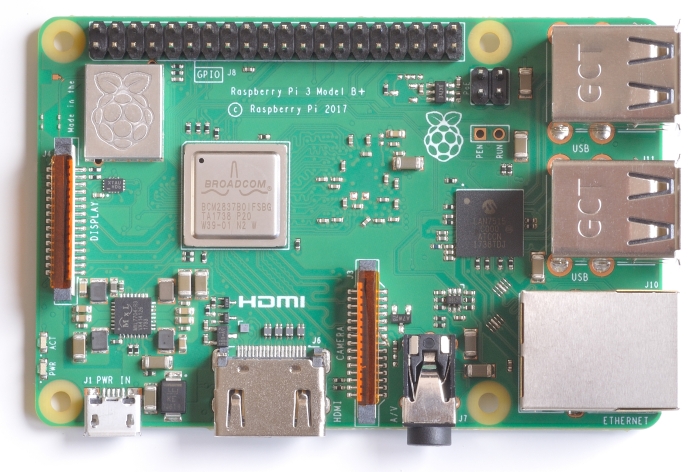

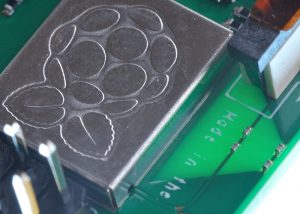


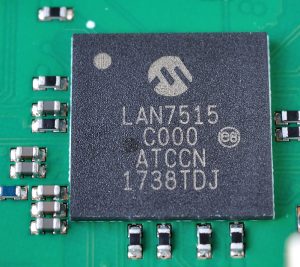
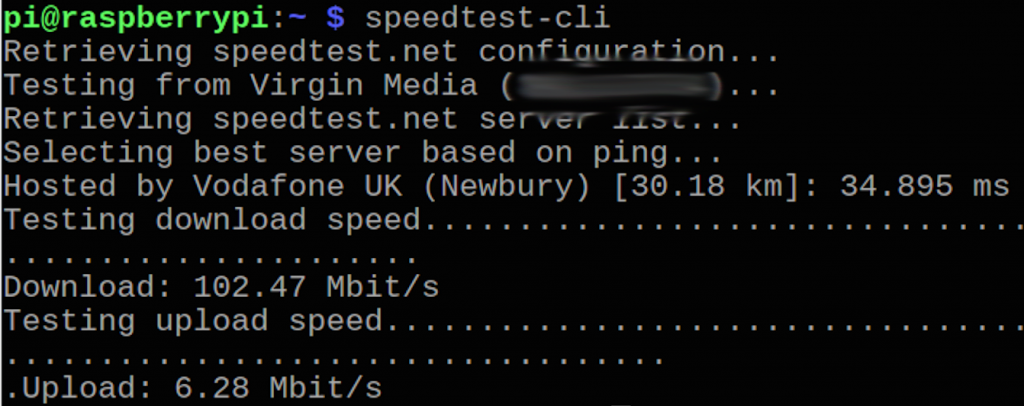
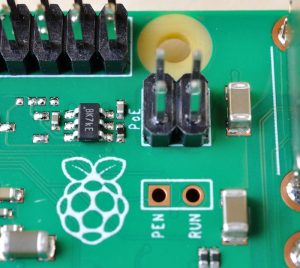

Hi Alex,
If I want to take advantage of faster bettering speeds, can I just plug in my configured and working Micro SD card from my 3B in to the 3B+ and be up and running straight away?
No. You’ll need the latest firmware. Should be available via
sudo apt-get update && sudo apt-get upgradeor
sudo rpi-update(but only the latter if you know what you’re doing)Thank you
I have seen rpi-update but have not used it. What is your experience with it?
It tends to be bleeding-edge, “use at your own risk”. So as the https://www.raspberrypi.org/blog/raspberry-pi-3-model-bplus-sale-now-35/#comments mention, you’d definitely want to do a backup first, in case it hoses your system.
Can I plug 32 gb from oldder Raspberry pi 3 to newest Raspberry pi 3B+?
No. With Pi that will never work. You need to update your distro to get the new firmware.
Looks like your Pi can’t remember where it was made ;-)
Perhaps it doesn’t know? ;p
Does the wireless chip get hot from constant use?
I haven’t had it in constant use, so I can’t answer that. :)
Really looking forward to the release of the PoE board.
Ah, but think of the much more logical YYYY-MM-DD format. Little endian vs. big endian…
Only another 1123 years to wait…
Much more logical and suitable for computer sorting. I once wrote a shopping cart that used YYYYMMDDHHMMSS$name as the order number, where $name was the first 5 letters of the surname. Sorting those orders into chronological order was absolute joy :)
Yup https://en.wikipedia.org/wiki/ISO_8601
great article as usual, Alex!
Also this is grand, the better connectivity will be really helpful for some projects!
Do you plan on conducting tests on the wifi (does it provide better signal strength, effective bandwith gain?)
Also do you plan to grab a multimeter and test what the 4 new pins do when a live PoE cable is connected? I do hope the answer isn’t “expose 48v to the child handling it”.
I don’t have PoE, so that would be a no. Gotta leave something for other bloggers you know :)
if you are going to be using PoE, do you need anything to plug in to the leads on the board, or is it plug in PoE and you are good to go?
You would need a PoE HAT from Raspberry Pi. This will be released in a few weeks.
There’s more details about the PoE HAT (and a picture!) in https://www.raspberrypi.org/blog/raspberry-pi-3-model-bplus-sale-now-35/
That’s not how Poe works it’s a protocol and needs a hand shake before the real power is turned on . Before that is just milliamps to cycle the hand shake chip
Clayton, that’s very reassuring, thank-you. I run Cotswold Raspberry Jam so I have a classroom full of children, and it’s possible we might use PoE for the PiNet system. So being confident that we won’t accidentally expose a room of 8-year-olds to 48v is quite important!
This article starts out with an opinion about an irrelevant topic. I can’t take this seriously. The entire thing can only be taken as subjective drivel.
Your comment does exactly the same thing, but at least mine was humorous. ;p
I’m with you on this one,Alex!
Me too! If James Hummel chooses not to read Alex Eames’ words of wisdom, then it’s his loss.
I wonder how it handles H265 and higher profile levels for H264 compared to RP3
That’s a good question. Sadly I don’t know the answer.
I know nothing about H264 or H265, but there’s some comments related to them in https://www.raspberrypi.org/blog/raspberry-pi-3-model-bplus-sale-now-35/#comments
How is the power of the usb ports?
Will enough energy come?
In my raspberry pi 1 I have to feed the usb aside.
The USB situation is much improved since the days of Pi1. Most things should work from USB power now as long as your PSU is good enough.
Completely agree, Alex. Connecting or disconnecting USB devices used to cause the original 256 & 512MB Pi1s to lock up or reboot. That rarely happens on a B+ and *never* seems to happen on a Pi 2 or Pi 3, so I can’t imagine it’ll be a problem on a Pi 3+ with a decent power supply.
The emphasis, as always with Raspberry Pi, is on having a decent power supply. It’s not just about amps, it’s also about voltage and consistency. You really can’t beat the official power supplies for quality at their price. Having said that, if you can find any old Nokia AC-10X mobile phone chargers, despite being only supposedly rated for 1 amp, I have found them to be extremely reliable for the Pi 2/3 also.
Yeah the only exception is it does still happen with the Zero, but that’s because the Zero is even more sparing with its USB circuitry and protection than the original Pi1 was :)
Can this version of pie send HDMI over Ethernet?
what are the unpopulated pen/run pins for? can the run pin be used with ground to start the device when you “shut it down” via software?
My Pi3B+ boots fine with the old SD card from Pi3.
I want to put it in a metallic case. Looking to solder an U.FL connector to Pi3B+ to mount the antenna on the box. I guess Ill need to cut the track to the shiny new on-board antenna.